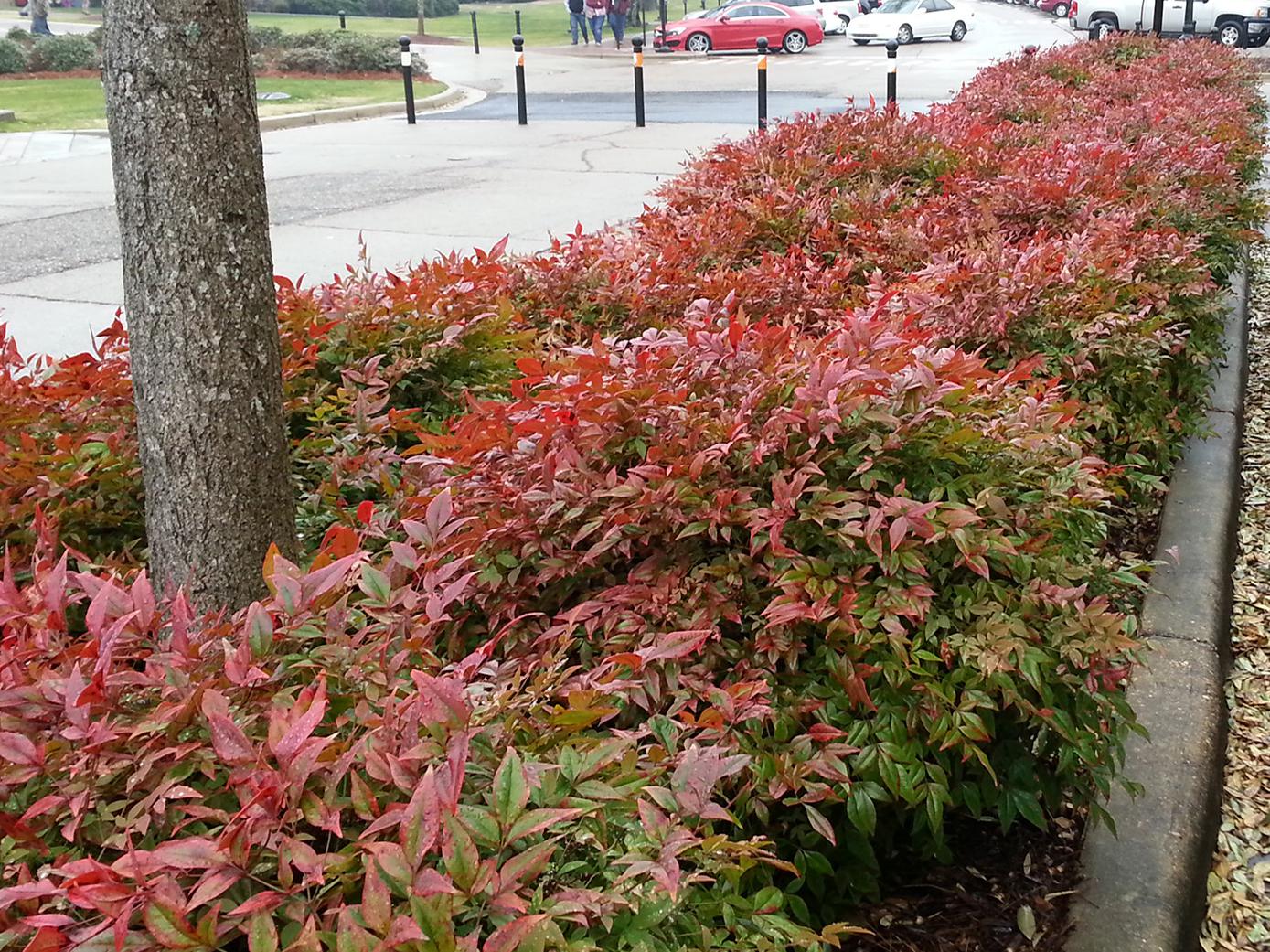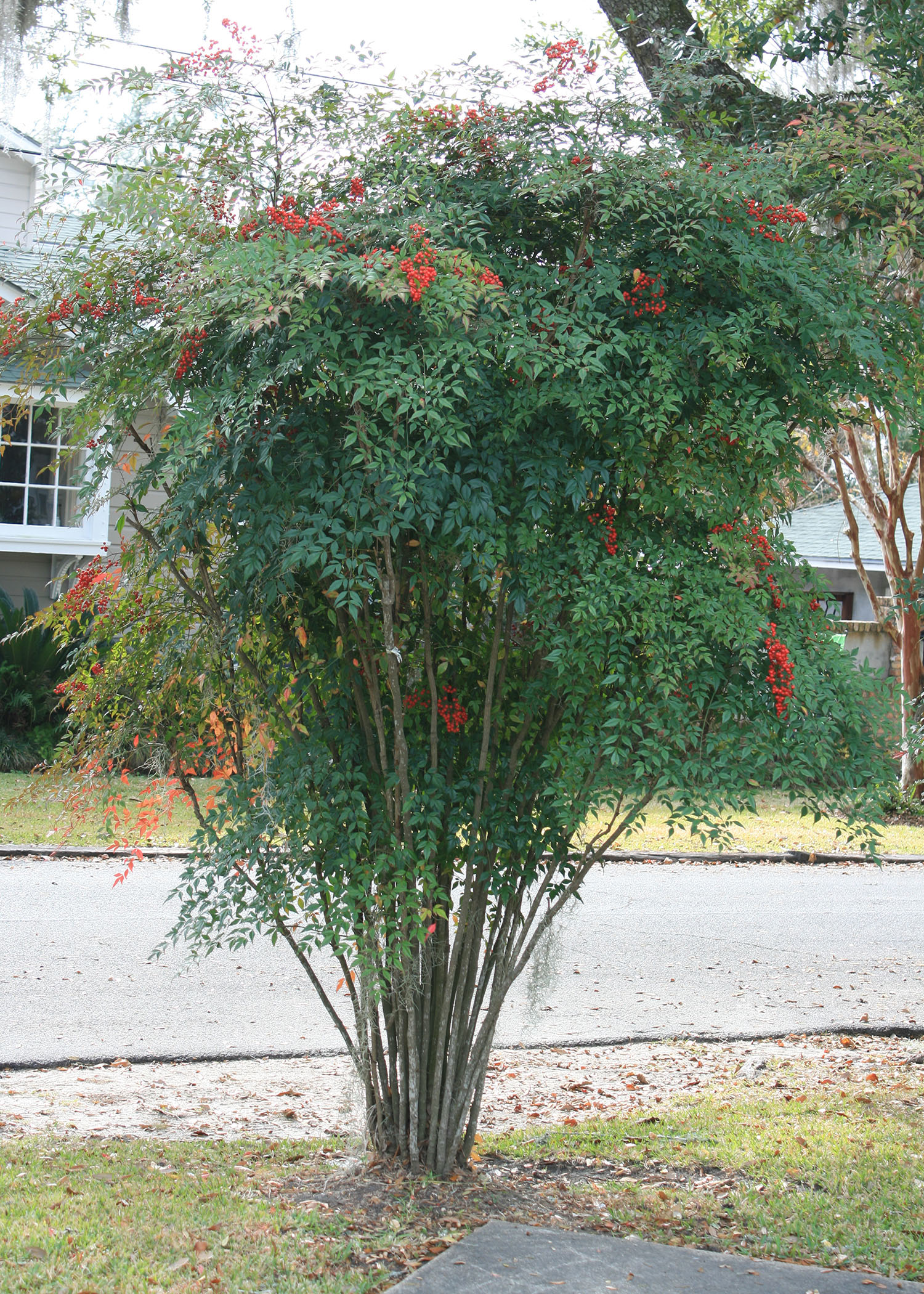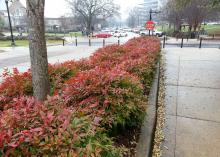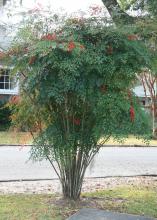Information Possibly Outdated
The information presented on this page was originally released on February 6, 2017. It may not be outdated, but please search our site for more current information. If you plan to quote or reference this information in a publication, please check with the Extension specialist or author before proceeding.
Nandina offers foliage color through winter
Except for a couple of cold nights, there's no doubt that I’ve been enjoying the mild winter we're having this year. It seems our landscape plants are also enjoying the moderate temperatures and flowering to show their approval.
But one thing I'm missing in the landscape is the variety of bronzy golds and reds our evergreen landscape shrubs display because of cold weather. Who doesn't appreciate the winter foliage of Japanese cleyera with its patina of rich burgundy? And what about my nandina, another great winter favorite?
In days gone by, nandina was called heavenly bamboo or sacred bamboo, and it was used to decorate home alters and temples in China. The upright growth of the main canes creates an arching appearance that does indeed resemble bamboo. This plant is certainly tropical and exotic looking.
Leaves are compound and bisected three ways. They are a bright, glossy green in the summer, but they really shine in the winter with a fiery array of reds and burgundies.
Left unpruned, nandinas can growth up to 8 feet tall, but 5 to 6 feet is typical. Another growth trait similar to bamboo is that the plant is rhizomatous, meaning it has a very strong, growing root system, and the plant spreads by clumping.
Nandina domestica flowers in the spring with big panicles of white clusters. In the fall and winter, the berries are the main event. The clusters of red berries start upright; as the berries mature, the clusters weigh down the canes.
One potential problem with nandina is the possibility of some weediness from the heavy fruit production. Several states have identified heavenly bamboo as invasive.
If you have a small space, you’re in luck because dwarf nandina varieties have been developed and have increased the landscape options. The foliage colors are awesome. Most of the dwarfs do not flower consistently, thus they do not have the gorgeous fruit production. However, some varieties may flower and develop fruit in colder environments.
One of the better dwarfs, in my opinion, is an old favorite called Firepower. This is a great choice for a small focal point planting or when massed together to make a statement. Firepower grows about 2 feet tall and wide with a compact mounding habit.
The foliage is green and transforms to red for the cooler months. The intensity of foliage color depends on whether the specimen is planted in full sun or partial shade. The colors are markedly more vivid with increased sunlight.
Because nandina tends to be a slow grower, my advice is to buy the biggest plants you can afford. Sometimes, homeowners buy smaller plants and put them close together to fill in an area. Ultimately, these plants become crowded, and some have to be removed. Buying larger plants and transplanting them according to their mature size actually results in better fill-in with fewer plants.
As with all landscape shrubs, plant your selections in well-drained soil and use a layer of organic mulch around the base. A little slow-release fertilizer scratched in around the plant each spring keeps your nandina shrubs well fed.






